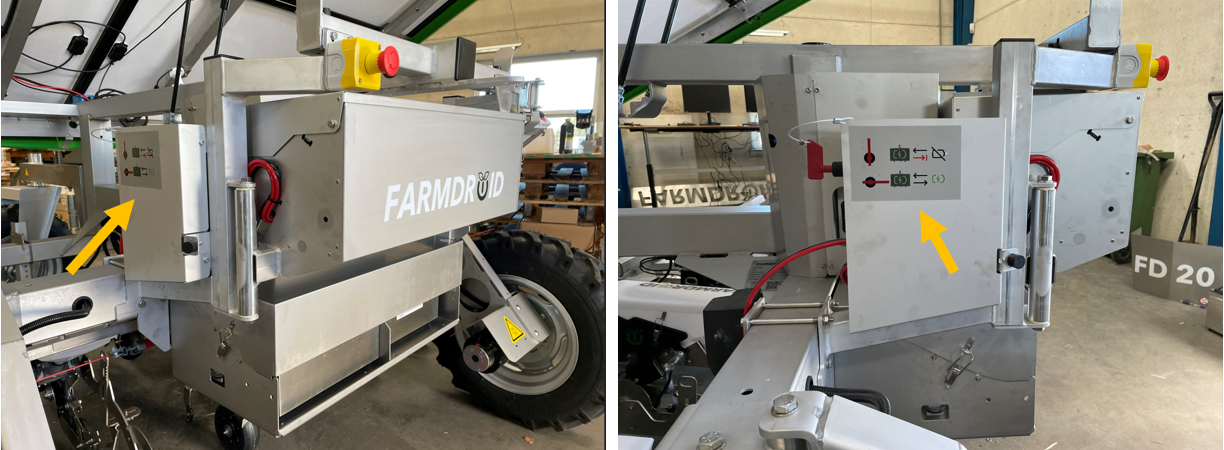POWER BANK (1/3): A How-To Guide
Maximizing FD20 Runtime: Power Bank Integration and Smart Energy Management for Field Operations
The power bank supports extended runtime whenever needed. Equipped with two 24V lithium batteries, it ensures reliable energy supply, particularly when solar panel output is limited—such as during early or late seasons—or when energy demand is higher than usual. This added capacity helps maintain 24/7 operations even under challenging conditions.
Regardless of whether you are using a power bank, following a few best practices will help you maximize your FD20’s runtime:
- Remove passive trailers not required for seeding operations, as they contribute unnecessary energy consumption.
- Before seeding, let the robot traverse the field with all trailers raised to establish efficient tramlines. This process not only improves operational efficiency but also helps identify potential issues—such as misplaced obstacles or areas with poor GPS signal—before seeding or weeding begins.
- Avoid working the soil deeper than necessary, especially in initial growth stages when weed roots are found within the top 1–2 cm. Deep cultivation can also bring dormant weed seeds to the surface, increasing future weed pressure.


A switch key and a corresponding explanatory pictogram (see images above) are located on the left side of the power bank assembly:
- When the key is set to VERTICAL, energy flows exclusively from the power bank to the robot, and the solar panels will not recharge the power bank. This configuration is most suitable when the robot is actively working in the field, the batteries are running low, and sunlight is insufficient to meet operational demands.
In these scenarios—such as during evening hours when solar generation has been inadequate—the power bank supplements the main batteries, ensuring the seeding or weeding tasks continue without interruption. This prioritizes the robot’s runtime, especially for overnight operations. Once daylight returns, all energy produced by the solar panels will be directed straight to the main batteries, supporting seamless transition back to solar charging. - When the key is in the HORIZONTAL position, energy can flow in both directions—allowing the solar panels to charge the power bank. This setting is ideal when the robot is parked outdoors and you plan to deploy your FD20 in the coming days, ensuring both the robot’s and power bank’s batteries are fully charged and ready. Utilizing this configuration lets you top up all batteries using solar energy at no additional cost.
NOTE 😀👇
Even on the sunniest days, solar energy alone cannot provide enough power to charge both the robot's and power bank's batteries while the FD20 is in operation.For optimal energy efficiency, it is advisable to remove discharged power bank batteries from the droid during active driving.
